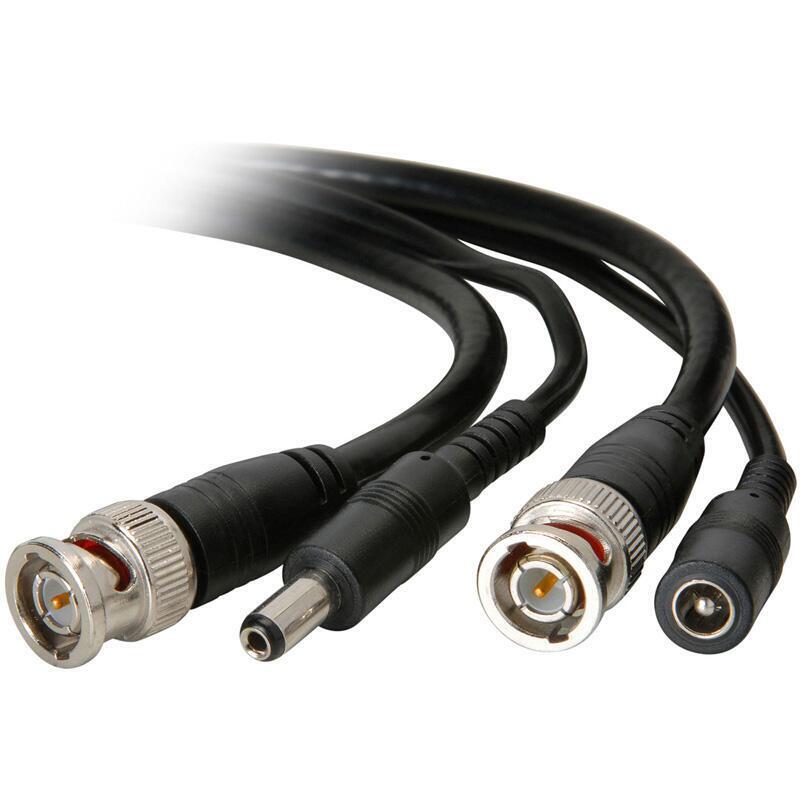- Home
- Video surveillance
- Special cameras
- Analog/TVI
Analog/TVI overvågning
Analogue, AHD, CVI and HD-TVI are usually old systems where coax cables are used instead of network cables.
Since it is difficult to run new cables, many choose not to replace their system with something newer, but there are actually several options to have your system upgraded to something new and smart in high quality anyway. We've made it easy and described it further down.














Do the cameras fit your system?
There is a sea of brands and old installations, and just because it is the same type of cable, it is far from certain that it will match.
It is important to check whether your recorder can handle the cameras you buy. Here are a few guidelines, but it is not a guarantee.
Completely analogue systems are compatible with very few cameras, as they can only run what corresponds to max. 800TVL (Under 1MP)
Here you can use the cameras that have CVBS, as they support both Analogue, TVI, CVI and AHD.
HD-TVI 2MegaPixel and below are usually compatible with all TVI up to 2MegaPixel. In few cases they are not compatible.
HD-TVI 2MegaPixel and above must usually be installed on a recorder from the same manufacturer that supports it.
If your DVR is an ADH or CVI recorder, it is usually only compatible with the same standard. Here you can also use CVBS, as it supports all four standards.
Keep the old cables and replace your equipment with something smarter
HD-TVI are analogue cameras in FULL HD and ULTRA HD. The cameras are available in up to 8 MegaPixel, so it is no problem to get a high resolution on the old cables.
If you want to see color all night, that is also an option with some of these cameras.
You also have the option of receiving a message directly on your phone if someone arrives. Here, the software is not in the cameras, but in the DVR recorder you choose.
Keep the old cables and convert to IP with converters
There is no doubt that IP surveillance has many more options than Analogue. The cameras are typically better. There are many more options for analysis, such as license plate scanning, census, fever screening and much more. Therefore, it is always more interesting to replace your cameras with IP when you have to invest in a new system anyway.
You put converters on your coax cables, which then convert the cables into network cables.
You must be aware that the quality of the cables is of great importance for how high a resolution they can handle. We would always recommend changing the cables rather than using converters.
Hybrid recorder that can record both analogue and IP
This solution is ideal for you who want to regularly replace your cables. A hybrid recorder can run with both Analogue and IP at the same time.
Do you have e.g. an eight-camera setup where you can easily run new cables for four of them allows for a partial upgrade that can be fully expanded down the road.
Change it all to IP
This solution is clearly the one we recommend. If you are in any way able to run new cables, this is the system you will get the most out of!
The great thing about an IP system is that it is flexible. With coax installations, you had to run all the cables from the camera all the way to the recorder. Not so with IP. It is network-based and can therefore be connected anywhere on the network.
Do you have e.g. a house where there is a camera in every corner, you have the option of placing a PoE switch centrally in the ceiling. Here, the cables only need to be pulled from the corners to the switch, and then only one network cable needs to go down to the router and recorder.
If it's a commercial property where there are network outlets around, you can connect them through them so you don't have to run cables across the building.
That's why it's so easy to pull out cables to your IP system, and then they run PoE, so you only have to pull one cable.
If you have the slightest doubt about which solution is best for you, call us - we are ready to guide you :-)

